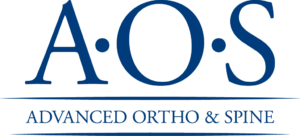 It’s that time of year again. School is gearing back up and school sports won’t be far behind. So, whether you are the parent of an athlete or a weekend warrior yourself, injury prevention is incredibly important to help keep you or your loved ones in the game.
It’s that time of year again. School is gearing back up and school sports won’t be far behind. So, whether you are the parent of an athlete or a weekend warrior yourself, injury prevention is incredibly important to help keep you or your loved ones in the game.
Of course, we’re human. Accidents happen and sports injuries can’t always be prevented. However, by being aware of the most common types of sports injuries, you can take steps to help reduce your risk of getting hurt. So, here are some of the most common sports injuries and how to prevent them:
Knee Sports Injuries
The knee joint is very complex. Also, it takes most of the impact and wear-and-tear during strenuous activity. So, it’s no surprise knee injuries are incredibly common among athletes. In fact, sports like running, football, basketball, and skiing, which require harsh and abrupt movements, have an increased risk of knee joint injury. Common knee injuries include:
- Anterior Cruciate Ligament (ACL) tears and injuries
- Medial Collateral Ligament (MCL) tear
- Meniscus tears and torn knee cartilage
- Dislocated kneecap
- Knee fractures
- Knee pain and stiffness
- Knee tendonitis
How can I reduce my risk of knee injury?
As always, properly warming up beforehand and ensuring correct posture and technique while playing, are crucial to preventing injury. Additionally, be sure to wear appropriate padding and equipment when available.
 Elbow Sports Injuries
Elbow Sports Injuries
Elbow injuries are very common among athletes, especially in sports like tennis, golf, baseball/softball, weightlifting, and swimming. Most often, they’re caused by repetitive extensions, contractions, or twisting and extending the wrist. So, here are some of the most common sports-related elbow injuries:
- Tennis elbow (lateral epicondylitis)
- Golfer’s elbow (medial epicondylitis)
- Tendonitis
- Elbow fracture
- Dislocated elbow
- Biceps tendon rupture
How can I reduce my risk of elbow injury?
Of course, the best way to prevent elbow injuries is to warm up and stretch before activity. Also, don’t overdo it. In fact, make a habit of listening to your body. Finally, if you’re experiencing pain or weakness, take a break.
Foot and Ankle Sports Injuries
Interestingly, around 25% of sports injuries are foot and ankle related according to the American Academy of Orthopaedic Surgeons. Additionally, sports that place more demands on the feet, like running, basketball, soccer, football, and dancing, have an increased risk of foot and ankle injury. Common injuries of the foot and ankle include:
- Achilles tendonitis
- Plantar fasciitis
- Stress fractures
- Ankle sprains
- Ankle fractures
- Neuroma
- Heel spurs
- Turf toe
How can I reduce my risk of foot and ankle injury?
In addition to properly warming up and stretching, ensuring you’re wearing the proper footwear can help keep you from hurting your foot and ankle. Also, build up your foot and ankle strength by adding exercises like squats, lunges, and dips into your workout regimen. Additionally, wearing a brace or wrapping your foot/ankle can also provide extra support, especially if you’ve had a past foot or ankle injury. As always, listen to your body and rest when you feel pain, weakness, or fatigue.
 Hand and Wrist Sports Injuries
Hand and Wrist Sports Injuries
Interestingly, hand and wrist injuries also make up around 25% of sports-related injuries, according to the American Orthopaedic Society for Sports Medicine. Unfortunately, athletic injuries to the hand and wrist are often disregarded and left untreated. Common sports-related injuries of the hand and wrist include:
- Tendonitis and tendon inflammation and dislocation
- Cubital tunnel syndrome (ulnar neuritis)
- Jammed finger
- Skier’s thumb
- Scaphoid fracture
- Wrist ligament tear
- Wrist sprains and fractures
- DeQuervain syndrome
How can I reduce my risk of hand and wrist injuries?
Again, routine stretching, warmups, and rest are some of the best ways to help keep you from getting hurt. Sports equipment and protective gear like wrist guards, gloves, and sports tape could also help to prevent a hand or wrist injury.
Shoulder Sports Injuries
Shoulder pain and injuries are relatively common among athletes and can range widely in severity and symptoms. Often, diagnosing the specific type of shoulder injury when it first occurs can be difficult. Therefore, early evaluation and intervention are crucial. Here are some of the most common sports-related shoulder injuries:
- Dislocated shoulder
- Rotator cuff tears and rotator cuff tendonitis
- Labral and superior labral anteroposterior tears
- Acromioclavicular joint injuries
- Thrower’s shoulder
- Fractures (broken bones)
- Swimmer’s shoulder
- Rugby shoulder
How can I reduce my risk of shoulder injuries?
As with all injuries, the best way to prevent shoulder injury includes proper stretching, warmups, technique, and rest. Additionally, exercises to strengthen the surrounding muscles and enhance mobility can help you avoid shoulder injuries. Good posture is also very important for shoulder injury prevention.
 Back and Neck Sports Injuries
Back and Neck Sports Injuries
Up to 20% of all sports-related injuries somewhat involve an injury to the back or neck. Lower back pain and injuries are particularly common in sports that use repetitive impact (i.e., running), twisting (i.e., golfing), or weight loading at the end of a range of motion (i.e., weightlifting). Neck injuries often occur in high-impact sports that place the cervical spine at risk, like football. Though they are less common, upper back injuries can occur, especially in sports involving torso rotation like golf, swimming, and tennis. Here is a list of common back and neck-related sports injuries:
- Lumbar (lower back) sprains and strains
- Herniated or bulging disc
- Spinal stress fractures
- Fractured vertebra
- Cervical (neck) fractures and dislocations
- Intervertebral disc lesion
How can I reduce my risk of back and neck injuries?
Properly stretching and warming up prior to activity is especially important when it comes to preventing back and neck injury. Additionally, strength training, particularly in the core area, can help give your neck and back extra stability and support. Also, ensuring proper posture can help keep you from injuring your back or neck.
When should I talk to a doctor?
If you are experiencing any type of moderate to severe and/or chronic pain, swelling, weakness, soreness, numbness, etc., you should contact a medical professional immediately. This will help ensure you receive the proper diagnosis and treatment plan.
Advanced Ortho & Spine can help.
At Advanced Ortho & Spine (AOS), we’ve cared for many athletes experiencing pain and injury. In fact, most are able to get back in the game with only conservative treatment, like physical therapy. Our team specializes in treating a full range of orthopaedic conditions. Schedule an appointment by calling 615.885.0200 or request an appointment online today.
 Dr. Christopher Cook is a Board-Certified Orthopaedic Surgeon and Sports Medicine & Joint Replacement Specialist at Advanced Ortho and Spine. He provides a full spectrum of Joint Replacement, Sports Medicine, and Shoulder & Upper Extremity services. Contact us today for more information or to request an appointment.
Dr. Christopher Cook is a Board-Certified Orthopaedic Surgeon and Sports Medicine & Joint Replacement Specialist at Advanced Ortho and Spine. He provides a full spectrum of Joint Replacement, Sports Medicine, and Shoulder & Upper Extremity services. Contact us today for more information or to request an appointment.

James Eby, MD, is a board-certified physiatrist, who specializes in nonoperative spinal procedures at Advanced Ortho & Spine. He provides a full spectrum of Physical Medicine treatments. Contact us today for more information or to request an appointment.
 Dr. Tarek Elalayli is a board-certified orthopaedic spine surgeon, who specializes in treating a full range of spinal conditions. Contact us today for more information or to request an appointment.
Dr. Tarek Elalayli is a board-certified orthopaedic spine surgeon, who specializes in treating a full range of spinal conditions. Contact us today for more information or to request an appointment.
 Dr. Erik Maryniw is a Board-Certified Hand and Upper Extremity Orthopaedic Surgeon at Advanced Ortho and Spine. He provides a full spectrum of Orthopaedic care and Microvascular Surgery from the hand to the shoulder. Contact us today for more information or to request an appointment.
Dr. Erik Maryniw is a Board-Certified Hand and Upper Extremity Orthopaedic Surgeon at Advanced Ortho and Spine. He provides a full spectrum of Orthopaedic care and Microvascular Surgery from the hand to the shoulder. Contact us today for more information or to request an appointment.
 Mitul Patel, MD is a board-certified orthopaedic spine surgeon, who specializes in treating a full range of spinal conditions. Contact us today for more information or to request an appointment.
Mitul Patel, MD is a board-certified orthopaedic spine surgeon, who specializes in treating a full range of spinal conditions. Contact us today for more information or to request an appointment.
 Dr. Lee Swiderek is a Fellowship-Trained Orthopedic Surgeon & Joint Replacement Specialist at Advanced Ortho and Spine. He provides a full spectrum of Joint Replacement and Complex Hip and Knee Reconstruction services. Contact us today for more information or to request an appointment.
Dr. Lee Swiderek is a Fellowship-Trained Orthopedic Surgeon & Joint Replacement Specialist at Advanced Ortho and Spine. He provides a full spectrum of Joint Replacement and Complex Hip and Knee Reconstruction services. Contact us today for more information or to request an appointment.
 Dr. Daniel Hagaman is a Fellowship-Trained Orthopaedic Surgeon & Sports Medicine Specialist at Advanced Ortho and Spine. He specializes in a range of orthopaedic conditions and treatments including Knee Arthroscopy, Knee Ligament & Cartilage Repair, Shoulder Arthroscopy, Hip Arthroscopy, Orthobiologistics, and more. Contact us today for more information and to request an appointment.
Dr. Daniel Hagaman is a Fellowship-Trained Orthopaedic Surgeon & Sports Medicine Specialist at Advanced Ortho and Spine. He specializes in a range of orthopaedic conditions and treatments including Knee Arthroscopy, Knee Ligament & Cartilage Repair, Shoulder Arthroscopy, Hip Arthroscopy, Orthobiologistics, and more. Contact us today for more information and to request an appointment.

With two locations near Nashville in Mt. Juliet and Hermitage, Advanced Ortho and Spine provides patients with high-quality, personalized care while advancing orthopaedic excellence. Contact us today to learn more or to schedule your appointment.
Disclaimer: This blog provides general information and discussions about health and related subjects. The information and other content provided in this blog, or in any linked materials, are not intended and should not be construed as medical advice, nor is the information a substitute for professional medical expertise or treatment.If you or any other person has a medical concern, you should consult with your healthcare provider or seek other professional medical treatment. Never disregard professional medical advice or delay in seeking it because of something read on this blog or in any linked materials. If you think you may have a medical emergency, call your doctor or emergency services immediately.
The opinions and views expressed on this blog and website have no relation to those of any academic, hospital, health practice, or other institution.

